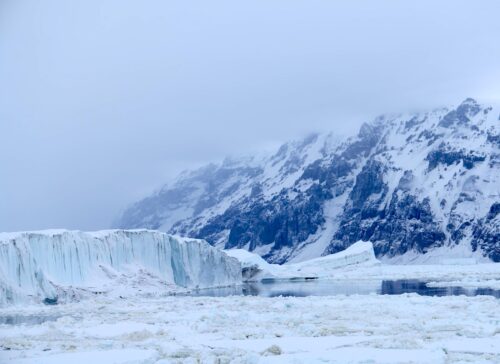 Yahoo News reprinted an item from The Cool Down, titled “Experts warn that beloved US coastal town could soon vanish off map entirely: ‘I’m scared,’” which claims Cape Coral, Florida, will disappear soon due to climate change-induced sea level rise. [emphasis, links added]
Yahoo News reprinted an item from The Cool Down, titled “Experts warn that beloved US coastal town could soon vanish off map entirely: ‘I’m scared,’” which claims Cape Coral, Florida, will disappear soon due to climate change-induced sea level rise. [emphasis, links added]
This claim is absolutely false. Actual sea level rise data is well below the extreme scenarios promoted in the story on which the article is based.
The Cool Down story repeats exaggerated projections from the organization called Climate Central, suggesting that Cape Coral, Florida, will “vanish” under rising seas by 2150.
It asserts that Florida’s average sea level could rise 3.6 feet by the end of the century and that 17,000 homes statewide could face annual flooding by 2050. Actual measured sea level data show this to be impossible.
The Yahoo News reposting also repeats the tired talking point that “a warmer planet acts as ‘steroids’ for weather,” claiming more frequent hurricanes and floods. Yet data show no clear global trend in tropical cyclone frequency.
The National Oceanic and Atmospheric Administration’s (NOAA) Historical Hurricane Tracks database similarly shows no upward trend in U.S. hurricane landfalls over the past century. Climate at a Glance also demonstrates that there is no upward trend in U.S. hurricanes.
The article quotes one resident saying, “I’m scared. It’s really weird. It’s weird to think about that it’s not gonna be here when I’m gone.”
That misplaced and overwhelming sense of fear is precisely what Climate Central’s alarming “drowning maps” are designed to provoke. It is not, however, justified by what Florida’s sea-level data actually show.
According to NOAA’s tide gauge record for Fort Myers (Station 8725520), which is the nearest to Cape Coral, the relative sea-level trend near Cape Coral is 3.64 millimeters per year, with a 95% confidence interval of ±0.42 mm/year, based on continuous monthly mean data from 1965 to 2024. That equates to 1.19 feet per century, as seen in the graphic below:

The long-term rise is steady and gradual—not accelerating catastrophically, and less than a third of the 3.6-foot projection that Climate Central is lying about.
In other words, the tide gauge shows reality; the computer model shows fantasy. Even if the Fort Myers trend continued unchanged, simple math shows it would take roughly 300 years to reach the water levels Climate Central claims are possible by 2150.
Florida’s sea level record is also influenced by local land subsidence, not just ocean volume changes.
As NOAA notes, relative sea level is affected by both global sea changes and regional ground motion. In Cape Coral’s case, this modest rise includes such localized effects.
There is no evidence of a dramatic sea level acceleration in recent decades. Even accounting for local subsidence, for nearly 60 years, Cape Coral’s sea level trend has been consistent, moderate, and predictable.
The total rise of about one foot per century is entirely manageable with conventional coastal infrastructure, drainage, and adaptation strategies—just as Floridians have managed tides, storm surges, and erosion for generations.
Climate Central’s projections are not measurements—they are computer model outputs layered onto maps to produce alarming visualizations.
These “surging seas” graphics have been widely criticized for failing to align with observed trends. Climate Realism has debunked similar false projections and maps made by Climate Central for locations such as Miami, Norfolk, and San Francisco previously.
As Climate Realism has repeatedly shown, sea-level rise rates at U.S. tide gauges have remained stable for more than a century, even as atmospheric CO₂ increased.
The Intergovernmental Panel on Climate Change AR6 report found that there is “low confidence in observed acceleration in sea-level rise at the regional scale,” further undercutting the premise that Florida is facing a rapid inundation crisis.
This article substitutes emotion for evidence and cites the anecdotal fears of residents, misled by the mainstream media over the past two decades, with false claims about climate change-induced sea level rise, rather than real-world data.
Climate Central’s maps do not represent measured science; they represent model-driven marketing for climate fear. The real-world numbers from NOAA’s tide gauges make that clear.
Journalism is supposed to illuminate truth and inform the audience rather than incite unwarranted panic. By promoting unfounded projections that “Cape Coral could vanish,” Yahoo News and The Cool Down are doing just the opposite.
That’s a sad indictment of the two media outlets’ reporting standards.
Read more at Climate Realism


















